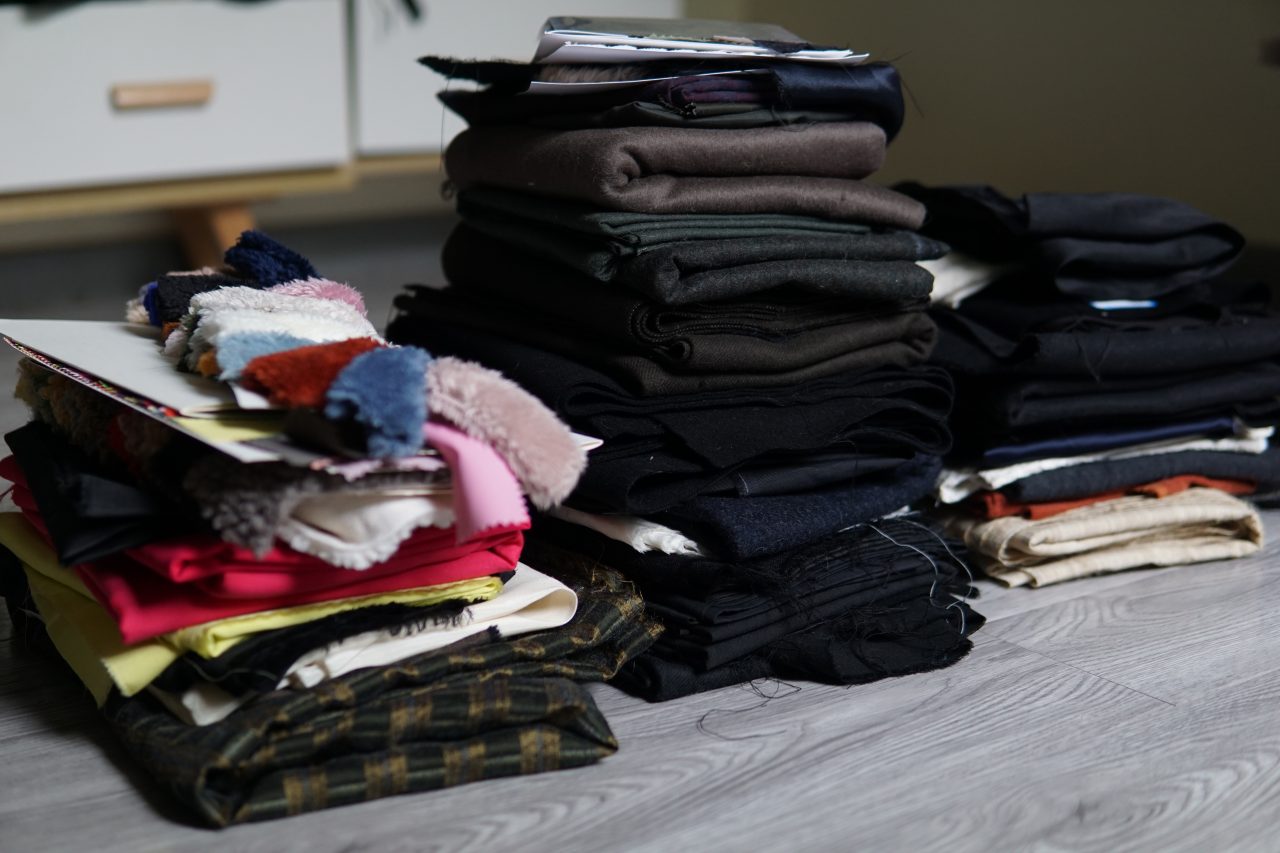Some time ago I wrote an essay regarding the initial considerations you should mull over before deciding to be a fashion designer. I would highly suggest reading that first in order to be aware of the challenges and pitfalls in this industry. Moreover, there are other roles in fashion which can potentially offer better career stability and higher salaries than being designers, because this industry is not solely run by the dreamers.
The designers that we hear on the news and social media make up the top 0.1% earners of the entire fashion industry. The reality for most fashion designers is that they earn the same standard of living as typical middle-class profession, or less. On average, fashion is not an industry that pays well for the amount of house that we put in. Therefore it is important to consider all these factors when deciding on a fashion career.
In this essay, I will be talking specifically about the 4 common ways to become a fashion designer and/or a fashion entrepreneur.
To begin with, I consider myself a fashion entrepreneur. I have been building my own brands from the ground up in the last few years, having run a retail business for several years prior to that. When discussing fashion journeys and challenges, it will be from the perspective of a business person who not only has to design clothes, but also make sure that the entire business operations from raw material procurement, pricing negotiation to customer relationship management are also tended to, all without being bank-rolled by venture capitalist money.

All fashion journeys begin with education and training
The million dollar question is, do you have to go to a fashion school? The short answer is no. The longer answer is, you should at least have an education in related field like art and design where you can learn basic design theories like colours and proportions. Before going to business school, I spent three years earning a diploma in Visual Communications. Very often I wondered why my class assignments were rather basic and mundane. More than a decade later, I now understood the importance of understanding colour cohesion and textures while playing with proportions based on the human body after having to apply them in actual design setting.
I will broadly define the career paths of fashion design into 4 major options. Your end goal should determine the sort of educational background you pursue.
A. You want to work in an established fashion house, ultimately becoming a famous creative director.
When we look at the designers at the helm of LVMH and Kering brands, an overwhelming number of them are recruited from the most well-known fashion schools around the world. Each of these schools does not simply accept students based on their ability, but also how their ideas fit into the overall culture that they want to instil in their graduates.
That is not to say that it is impossible for students of less-known institutions to break through the ranks in the industry. One just have to be more persistent in knocking doors and grow a thick skin to deal with rejections, on top of having adequate technical skills and unique vision.
Be prepared to work on unpaid internships for months, or even years, until you have proven to be an indispensable part of the company. It is unfortunate that major fashion houses are known to not pay their interns. This is simply due to the law of supply and demand. There is a large number of willing hands (ie. fresh graduates who want the prestige of working in a famous house) versus the number of spots available for graduate programs, paid apprenticeships and junior assistant jobs. Over the years, this over abundance in labour supply has pushed the wages down so much that unpaid internships has now become the common pathway to entering the industry. The more prestigious the brand, the more willing students and fresh graduates are to work for free, even if you might end up learning less than on the factory floor.
Starting as an intern, and if you get lucky, you might be able to get hired as a design assistant, then you can work your way up to various positions in the design team and even Head of Studio. Unfortunately at this day and age, there is no guarantee that you will end up being the creative director because the brand owner might decide to bring in outsiders. If you feel that you have hit the glass ceiling however, you can always set up your own brand.
A-2. You want to work in an established mass-market company with high brand value such as Nike and Zara
You should pick a product or fashion design degree in a well-networked school, prepare a portfolio that is relevant to the market segment that your dream company serves, then apply for a (hopefully) paid internship, or a fashion design assistant role. In general, large sportswear companies are known for their generous remuneration, and if you play your cards right, you can build an expansive network with other key industry players that will help you build your own brand should the desire arise in the future.
B. You want to work in an established fashion house, but spending 3-4 years on a degree is not feasible due to time or budget constraints.
In the old days when Jean Paul Gaultier was a young boy, you can knock on the doors of fashion houses and ask for an apprenticeship without much experience nor relevant education. But with more students willing to work on unpaid internships to snip threads all day and bring coffee all night, those days are probably gone.
A short-term vocational school would be a good bridge between going all out investing in a tertiary education and not having any skills at all. Usually offered at a much cheaper rate and with less theory-based classes, the skills offered would put you ahead in getting an internship or even a salaried junior technical roles on the factory floor or small workshops compared to fashion graduates who draw pretty pictures but do not know how to cut a suit.
Technical skills and production knowhow are highly prized in the industry – without their contribution there is no fashion as we know it today, which is also why I value having a hardworking pattern maker and he gets paid more than the salary he asked for. Some people can jump across the aisle to being fashion designers provided if they can show that they have a good eye for aesthetics.
Even if the first job you get out of a vocational school isn’t in one of the big fashion houses, you are still getting your foot in the door and making valuable connections by working in technical fashion design and production. If you accumulate the right experiences, you can use them as leverage to enter more prestigious companies.
C. You want to start your own independent company running a small-scale operation
Have a unique perspective and be business savvy. Basic tertiary education that teaches logical thinking and propensity for business calculations would help. Tertiary courses that develop one’s aesthetic knowledge might also be helpful. If you have one then work on the other during or after your studies. A business also cannot survive only on the tenacity of one person. It’s easy to start a brand – these days one or two signature items might even suffice – but it is difficult to sustain a healthy operation as a sole operator. Therefore it is important to hire the right people – especially in specialist technical roles, clothes from new brands often suffer from not using the right facing, stitching and padding – or build a partnership with someone you can trust.
I would like to stress however, schools often do not teach you how to find small-scale textile suppliers and garment producers. You need to do your own leg work. Going to a prestigious school means nothing if you cannot get your ideas produced.
D. You want to run a big fashion company that gets the industry talking
This is a combination of A and having plenty of money to pay for PR and marketing. Industry insiders often attend graduate shows of prestigious schools and keep tabs on the graduates’ progress. Winning competitions such as LVMH Prize would also open doors to the fashion press, of which LVMH devotes a part of their advertising budget to for them to cover the event.
The fashion press is largely an advertising space and the PR companies are their clients. In order to get a representation or even the slightest notice by the old guards, you have to pay a PR company to develop your brand and marketing strategy. That also includes padding social media accounts with artificially-inflated number of followers, likes and views. PR companies will also develop brands’ media kits to send to publications. And if you are lucky the publications will notice, write snippet of your work on their digital platform, and pull your garment for an editorial. PR companies who have connections to celebrities can persuade them to wear your clothes for a fee. Most of the clothes we see on celebrities are either gifted by brands, or they are paid for by the brands. In my observation, only a select few celebrities are genuine supporters of the brands they wear.
Basically to be an insider, you have to know people on the inside. The less credibility you have – be it from alma mater or work history – the more you have to pay for PR to make it big. And even if you have the money, not all PR firms will take you on because they have a reputation to maintain.
Whichever path you take, show up and work hard
While the industry is rife with tales of horrible internships, interns with lamentable attitudes are also common in the industry. When I asked one of my manufacturing partners why they did not hire interns during peak seasons, they said that they do not have the time to deal with students’ various inconsistencies and unwillingness to do tasks they feel are beneath them. Other anecdotes include leaving the internship midway to go on holiday.
Personally, I too have had a bad experience staffing my team. One part-timer decided to not turn up one day after calling in sick. Another (paid) intern claimed to have spent several years in fashion school but could barely sketch a garment. As someone who has to multi-task constantly, I did not have the time to teach her the basic knowledge that she should have gained in school. While these anecdotal evidence do not paint the situation across the entire industry, it is rather telling that many of my industry peers have their own horror stories to tell. Young students enter the industry filled with expectations that are not aligned with reality, and they get disheartened when faced with gruelling work that awaits them.
Needless to say, there are other ways in which designers have worked their way into the industry. But one would do well to remember that fashion is a highly competitive industry that is not easy to break into nor hold on to. We are all fighting for a space in this industry that is solidifying into oligarchies. The road to making it ‘big’ in fashion is dependent on your skills, grit and tenacity. That, or money and connections.




